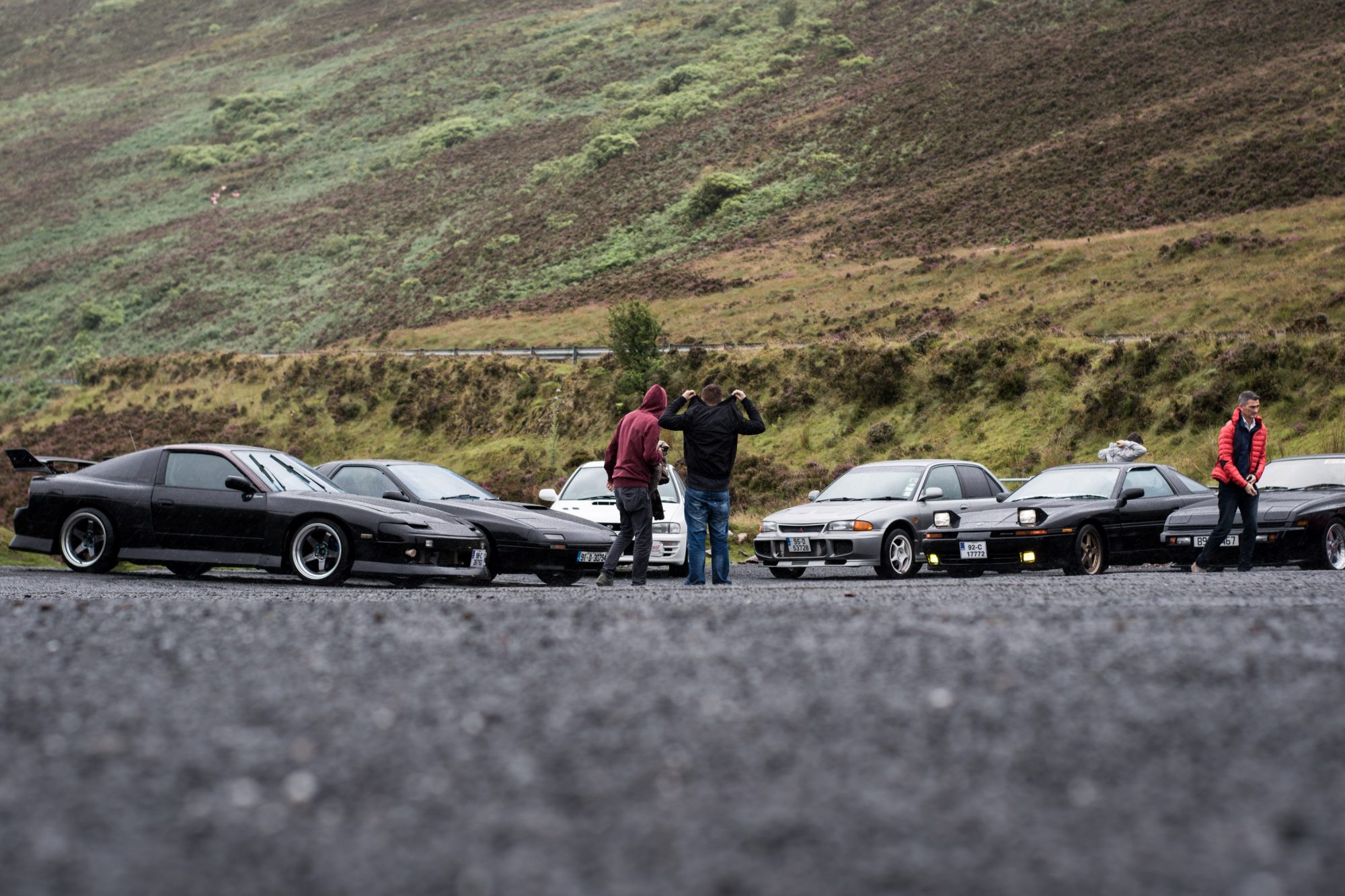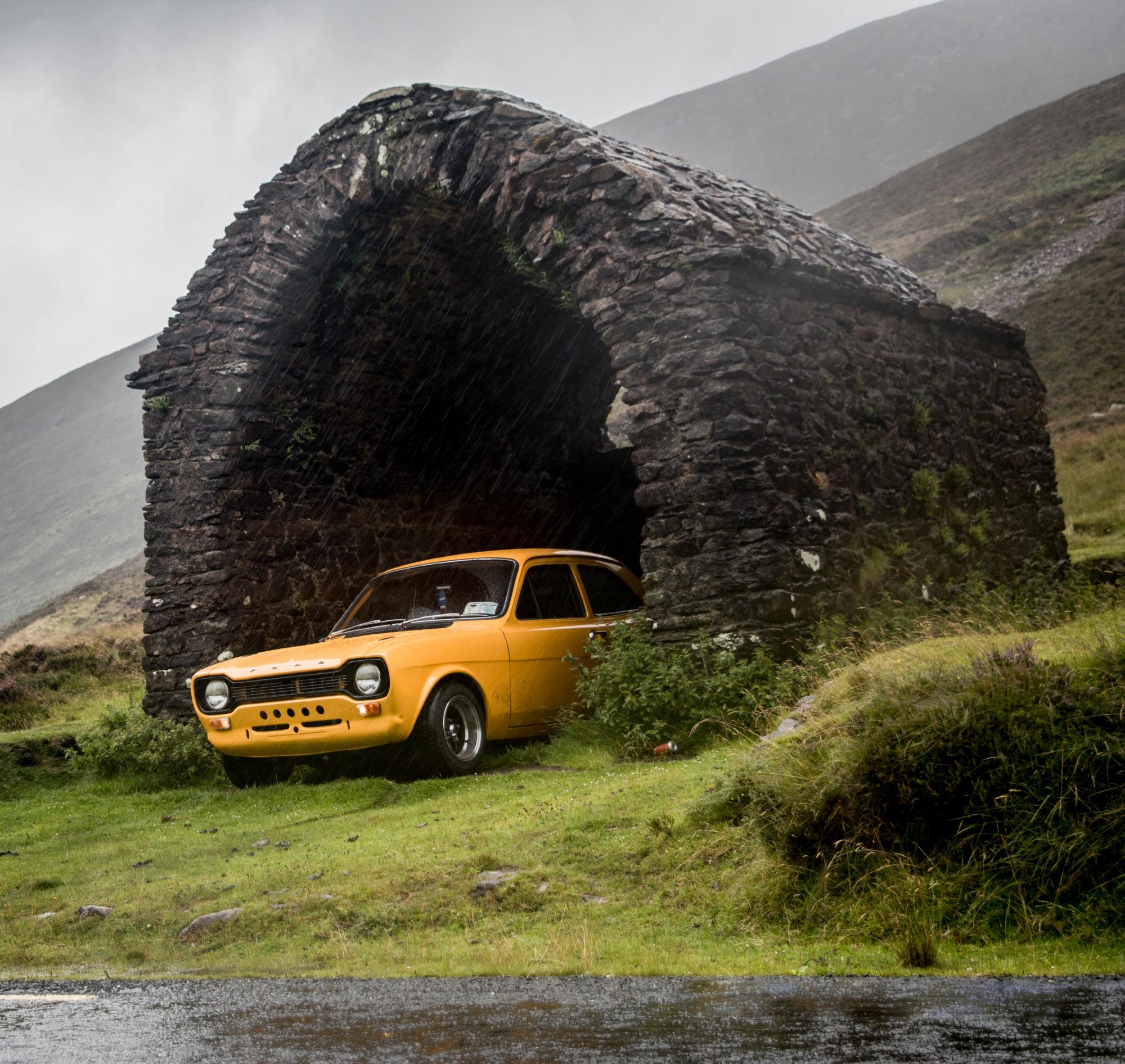
Irony is writing about the cars I see back home in Ireland while sitting at the edge of a different European island that’s in many ways an utter contrast, one that’s too hot and too small to have any decent driving roads. As I write this, I am sitting in an over-warm room in (or I suppose on?) Sicily, gazing periodically and aimlessly across the sea at the land that gave us the likes of Ferrari, Alfa Romeo, Lamborghini, Maserati, wishing that more of those cars had crossed the Tyrrhenian Sea. See, I know now that my expectations were naive. In my mind Sicily would have plenty of fine Italian metal prowling its sun-bleached streets, or at least a few GTVs running around. Reality showed me that people that live here primarily employ the scooter as primary transportation, and I didn’t see anything much more interesting than that in regards to cars.
This gets me thinking about our expectations when it comes to car cultures foreign to us. I had assumed some things that turned out to be far off the mark in the case of Sicily, so I figured it might be interesting to share my perspective from a place I know well. Ireland doesn’t have the connection to cars that Sicily may have (even if it’s mostly just a proximity thing nowadays), but there is a community of enthusiasts living there with an affinity for driving. For those wondering about the car culture in Ireland, this is my perspective. It turns out there is fun to be had without the involvement of beer, whiskey, or rugby.
Welcome to Ireland!
To start, the physical environment here is a harsh one. It’s the kind that isn’t kind to metals (the stuff that cars are made of, or at least they used to be). Any and all automotive happenings out here take place underneath a seemingly continuous coating of fog, and the roads on most days are pocked with puddles and wear a sheen of general dampness. That said, they are fantastic for driving on. Along the coastal cliffside with the battering Atlantic, Celtic, and Irish Seas throwing up spray, or more inland to the rolling hills that hide gorgeous sprints of tarmac in their folds, there are more than enough make-shift race tracks here, and it’s not uncommon to find out that you’ve got them almost all to yourself.
I ask you to name one car that was, or is being built, in Ireland. Nope, you can’t name one. Although, Henry Ford opened a factory in the country for instance, they were building mainly tractors back then, and very few cars. You might assume then that there is not much of an automotive culture to be found, but the Irish have a penchant for motor power; whether its a boat, a tractor, a motorcycle, or a car, every conceivable form of locomotion has a fanbase in Ireland. I’m mostly interested in the sports cars of course, and after moving here from Romania, I was happy to find so many different types represented here. You have the proximity to England for one thing, which means there are troves of MGs and other quintessential roadsters running around Ireland, but there is also a sizable network of American muscle cars to demonstrate the diversity that exists here.
As for the strong support for cars from Japan, the only thing that the two countries have in common when it comes to cars is that they both drive on the left side of the road. For this reason alone (alright, alright, and also because Japanese cars are quick and cool and reliable), there are plenty of imports from the east, with Supras, Celicas, and Silvias being common sights at car shows and events.
As far as the activities of these machines from all over the globe? As soon as winter relents its icy grip on the land, and after many months of drudging through slush in the dark cold, Ireland turns into a country filled with the sound of engines being put to work. There is something to watch or participate in nearly every weekend, and from small “runs,” to road and off-road rallies, to drifting, there is more than enough driving to balance out the static car shows.
In terms of rallying, there are so many small races going on around the island that it’s a true task to keep track of all of them, though there are a few major ones that attract large crowds. Anyone with a passing interest in motorsport attends these, from boy-racers to mature enthusiasts, to grandparents and grandkids building new traditions. There are great rallying events happening elsewhere on the globe surely, but there are few places that have the allure of Ireland in my opinion: there aren’t many other locations where you’re apt to find a Mk1 Ford Escort at full-tilt on a road that’s basically too narrow for a single car, with crevasses and stone walls and bigger stone homes on either side. It’s a nerve-wracking experience just to witness something like that, so close to peril and yet being driven flat-out.
As for Irish motorsport as a whole, drifting is a whole different story than rallying, and it’s here where things get serious. Over the years, as the sport launched into the popular automotive lexicon, Ireland has been churning out some big talent in the sideways anti-racing arena. Going on 14 years now, there hasn’t been anyone from outside of Ireland that’s been able to snatch a podium from a native in the Irish Drift Championship, though many have tried.
But let’s get back to regular people and their not-so-regular cars. As you’re likely aware, especially if you live in Europe, right-hand drive cars are usually cheaper to buy than left-hand drive ones. That’s because there just isn’t nearly the same demand for the rarer configuration, and so used cars from the British Isles tend to be stay here, bought and sold by a limited pool of people. Importing something left-hand drive is not common outside of the enthusiast crowd, due in large part to a thing we call VRT. It’s a tax that everyone even thinking of importing is afraid of—it’s a clown with a big knife that wants to charge you too much money for trying to own something interesting.
Naturally, because of this tax, cars here are a bit more expensive than in the UK even, so there’s really no other market for used cars aside from the internal one in Ireland. On top of this you have a pesky road tax. What’s a “road tax”? This one is a question that almost no one can answer, and that’s because it has so many smaller taxes embedded in it that people can’t even remember what the last addition was. All we know is, this tax is high. The bigger the engine capacity, the higher the tax gets, so it’s only natural that smaller-capacity cars are preferred in Ireland. But no one said they can’t be turbocharged!
But despite all these tariffs and the strict and expensive insurance policies, somehow the Irish have found a way to beat the odds and still drive cool cars. Proof of this is can be seen in the various the motorsport events, car shows, and all the “runs” I mentioned earlier. There’s almost no Sunday where a Cars & Coffee isn’t taking place somewhere on this rock, but I prefer the act of driving to the act of standing and making smalltalk, and so I find much more pleasure in taking my Z for a drive with a group of spirited driving fans like myself. The roads are incredible, and it’s not like there are only a few really supreme spots either; you can get lost looking for one street in particular and find yourself on a much better version by accident. It’s all the winding, elevation changing, banked, empty roads you could ask for, and if you’re brave enough the near-constant wetness offers plenty of chances to play with traction.
When people talk about Ireland, they usually default to the stereotypes and will invariably mention Lucky Charms, Guinness, or rain. Rarely does anyone consider the fact that there’s a huge car scene in this country, a scene where all types, all marques, and (almost all) models are represented and welcomed. Except the Fiat Multipla, no one likes that one!


























